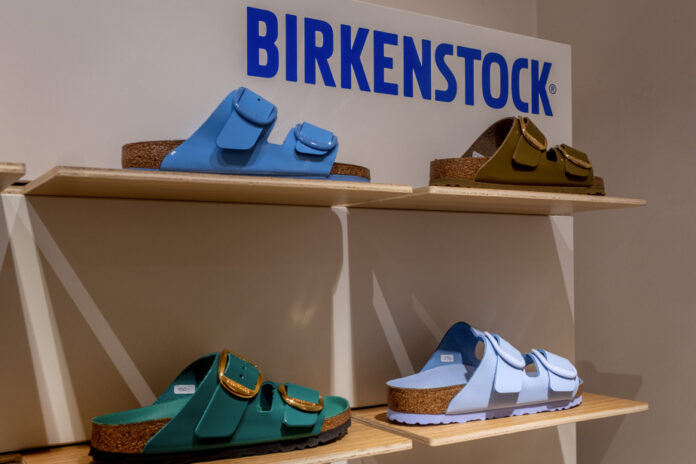(New York) Big step for Birkenstock: the German sandal giant will make its debut on the New York Stock Exchange on Wednesday, with a valuation of $8.6 billion which marks its success in fashion and luxury, far from early corniness.
Birkenstock set the unit price of the stock at $46, according to a press release Tuesday, in the middle of the initial range of between $44 and $49. In total, at least some 32.26 million shares will be floated under the ticker symbol “BIRK.”
The context is favorable for the company which entered the fold of the world leader in luxury LVMH in 2021: sandals with straps and cork soles appeared on Barbie’s feet, in a candy pink version, in the blockbuster about the eponymous doll which was on display all summer.
As for the IPO market, weighed down for more than a year and a half by the tightening of credit conditions, it is regaining color.
The recent listings of the British microprocessor designer Arm and the American grocery delivery platform Instacart have been successful.
“An IPO in New York demonstrates global ambitions” for Birkenstock, analysis for AFP Fernando Fastoso, professor of luxury brand management at the German University of Pforzheim.
By engaging in collaborations with fashion houses like Dior, Givenchy and Céline, the company has already largely begun this shift in recent years, becoming a fashionable brand at the beach, in the evening or on the catwalks.
Latest example: the Tokio mules and Milano sandals presented in a palette of sunny colors at the Dior men’s show in June, as part of a new collaboration with the German brand.
Since 2021, Birkenstock has been controlled by the L Catterton investment fund, with which the world leader in luxury LVMH and its boss Bernard Arnault are associated.
The family dynasty remains a shareholder in the company, still based in Germany and whose origins date back to 1774.
The company began by marketing soles, before launching into sandals in 1963. First orthopedic, then hippie and finally trendy, the German barefoot has seen all colors.
Birkenstock underwent a significant change when the family brought in external management in 2013.
It was the transition “from a family business focused on production to a professionally managed global player,” recalls an analysis by CMC Markets.
Sales grew at an average rate of 20% over the following years, according to CMC Markets.
“Birkenstock now wants to develop its iconic status to target the growing luxury market around the world,” emphasizes Mr. Fastoso.
“The financial power of LVMH now gives Birkenstock the means to expand its network of distributors around the world,” confirms Marguerite Le Rolland, analyst for the research firm Euromonitor.
Beyond Europe and the United States where Birkenstock is well established, China, India, Mexico and Thailand are promising markets.
But turning a German family business into a Wall Street-listed corporation is not without risk.
In the lifestyle and fashion market, “competition is intense, both with established companies and with new players” in a context where consumer budgets are strained by inflation, notes CMC Markets.
And if lovers of luxury products expect a brand to be rare, Birkenstock should opt for a reduction in volumes sold, observes Mr. Fastoso.
Now widely copied, the chunky sole sandal can be found everywhere without it always being clearly identifiable, posing a new challenge for Birkenstock.
The company recorded revenue of €1.11 billion in the first nine months of its fiscal year, from October to June, up 21% year-on-year.















